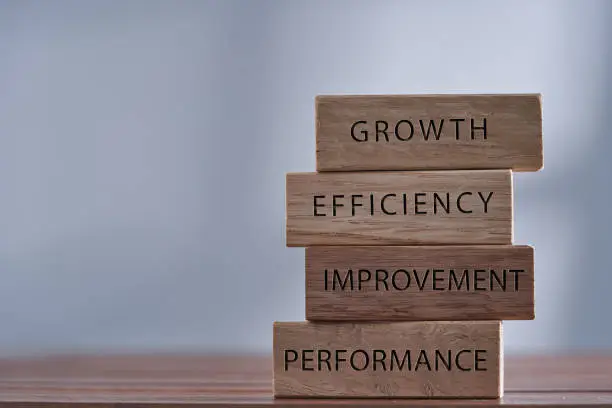Maximize Your Learning Investment: Tips for Choosing the Right Off-the-Shelf Content

The need to maximize your learning investment is significant. Not all off-the-shelf content are for you. As the world becomes more digital, organizations are constantly looking for ways to upskill their employees and improve their performance. One of the most effective ways to do this is through eLearning.
Off-the-shelf content is an excellent option for companies that want to provide their employees with a high-quality learning experience at a reasonable cost.
In this blog post, we will provide tips for choosing the right off-the-shelf content to maximize your learning investment.
Read: Custom eLearning Vendor: 4 Tips regarding their Usefulness
What Off-the-shelf Content
Off-the-shelf content is pre-made eLearning content that can be purchased and used by companies. This content can be used as-is or customized to meet specific learning needs.
Importance of choosing the right content
Choosing the right off-the-shelf content is essential to maximize the return on investment (ROI) of your learning program. The right content will provide your employees with the knowledge and skills they need to perform their jobs effectively.
Why is Picking the Right Content Important
Cost-efficiency:
Using pre-made content is often cheaper than creating custom content. However, if you choose the wrong content, it can lead to wasting your resources. Picking content that fits your goals and who you are trying to reach helps you get the most out of what you spend.
Saves Time:
Creating personalized content takes a long time. Using pre-made content allows you to easily use it without any extra work, which saves you time.
However, if you end up with content that needs a lot of changes or doesn’t meet what you need, it can waste a lot of time.
Quality Assurance:
Quality Assurance (QA) is the process of checking and ensuring that products or services meet certain standards or requirements. It involves thorough testing and evaluation to identify and fix any potential issues or problems.
The goal of QA is to make sure that the final product or service is reliable, consistent, and meets or exceeds customer expectations.
Scalability:
Pre-made content is usually made to be easily adjustable. However, if you make the wrong choice, it can make it difficult for you to change and improve your training programs as your needs change.
Engagement Levels to what is being Learned:
When choosing pre-made content, it’s important to make sure it matches your specific learning goals. If the information does not align with what you want to learn, it can make you confused and make your learning less effective.
Learning Objective Relevance:
Trusted companies that offer pre-made content usually follow rules and guidelines set by the industry and use the most effective methods. If you pick information from reliable sources, it will ensure that your training or learning materials are of good quality and accurate.
Engagement and Learning Styles:
Each group of people has different likes and ways of learning. The pre-made content should appeal to these preferences, either by using interactive parts, video courses, or written materials. Not thinking about what your audience wants can make them lose interest.
Overview of the tips that will be discussed
This post will discuss several tips to help you choose the right off-the-shelf content for your organization. These tips include identifying your learning goals, assessing the content quality, considering learning styles and preferences, evaluating the content provider, thinking about technical requirements, and assessing cost and ROI.
Identify Your Learning Goals
A. Explanation of the importance of setting learning goals
Before choosing off-the-shelf content, it is essential to identify your learning goals. Knowing what you want to achieve will help you choose the right content that aligns with your goals.
B. Tips for identifying learning goals
To identify your learning goals, you can start by asking yourself some questions such as, “What skills do I want my employees to develop?” or “What knowledge gaps do my employees have that need to be addressed?”
C. Examples of learning goals and how they can inform content choices
For example, if you want to improve your employees’ customer service skills, you can look for off-the-shelf content that covers topics such as communication, problem-solving, and conflict resolution.
Assess the Content Quality
A. Explanation of why content quality is important
The quality of the off-the-shelf content you choose is critical to the success of your learning program. Poor quality content can lead to low engagement, retention, and transfer of learning.
B. Tips for assessing content quality
To assess content quality, you can look for factors such as accuracy, relevance, interactivity, and engagement.
C. Examples of quality indicators to look for
For example, high-quality off-the-shelf content should have up-to-date information, be relevant to your industry, provide interactive and engaging activities, and align with your learning objectives.
Consider Learning Styles and Preferences
A. Explanation of the importance of considering learning styles and preferences
Different people have different learning styles and preferences. Understanding these preferences and styles can help you choose off-the-shelf content that will be more effective for your learners.
B. Tips for identifying learning styles and preferences
To identify learning styles and preferences, you can use assessments or surveys to gather information about your learners. You can also observe your learners and gather feedback from them.
C. Examples of how to match content to learning styles and preferences
For example, if your learners prefer visual learning, you can choose off-the-shelf content that includes videos, images, or infographics. If your learners prefer interactive learning, you can choose content that includes simulations, games, or quizzes.
Evaluate the Content Provider
A. Explanation of why the content provider is important
The content provider plays a crucial role in the quality of the off-the-shelf content
B. Tips for evaluating the content provider
To evaluate the content provider, you can look for factors such as their reputation, experience, customer service, and support.
C. Examples of what to look for in a content provider
For example, a good content provider should have a positive reputation in the industry, have experience working with organizations similar to yours, provide excellent customer service and support, and offer regular updates to their content.
Think About Technical Requirements
A. Explanation of why technical requirements are important
Technical requirements are an essential consideration when choosing off-the-shelf content. You need to ensure that the content is compatible with your learning management system (LMS) and that your learners can access it easily.
B. Tips for assessing technical requirements
To assess technical requirements, you can check the content specifications and system requirements provided by the content provider. You can also consult with your IT team to ensure compatibility with your LMS.
C. Examples of technical requirements to consider
For example, you should consider the file format, browser compatibility, bandwidth requirements, and any other technical specifications provided by the content provider.
Assess Cost and ROI
A. Explanation of why cost and ROI are important
Cost and ROI are important factors to consider when choosing off-the-shelf content. You need to ensure that the content you choose provides a good return on investment and fits within your budget.
Read: Maximizing Your Investment: 7 Top Ways to Measure Training ROI Successfully
B. Tips for assessing cost and ROI
To assess cost and ROI, you can compare the cost of the off-the-shelf content to the cost of developing custom content. You can also assess the ROI by evaluating the impact of the content on your learners’ performance.
C. Examples of how to assess cost and ROI
For example, if the cost of developing custom content is higher than the cost of purchasing off-the-shelf content, it may be more cost-effective to choose off-the-shelf content.
You can also evaluate ROI by tracking metrics such as learner engagement, completion rates, and job performance.
Conclusion
This post provided tips for choosing the right off-the-shelf content to maximize your learning investment. These tips include identifying your learning goals, assessing content quality, considering learning styles and preferences, evaluating the content provider, thinking about technical requirements, and assessing cost and ROI.
Importance of choosing the right content
Choosing the right off-the-shelf content is essential to ensure that your employees receive a high-quality learning experience that provides a good return on investment.
Final thoughts
By following the tips provided in this post, you can choose the right off-the-shelf content for your organization and maximize your learning investment.
Remember to assess your learning goals, evaluate the content quality and provider, consider learning styles and preferences, think about technical requirements, and assess cost and ROI.
With the right off-the-shelf content, you can upskill your employees and improve their performance, leading to increased productivity and success for your organization.







